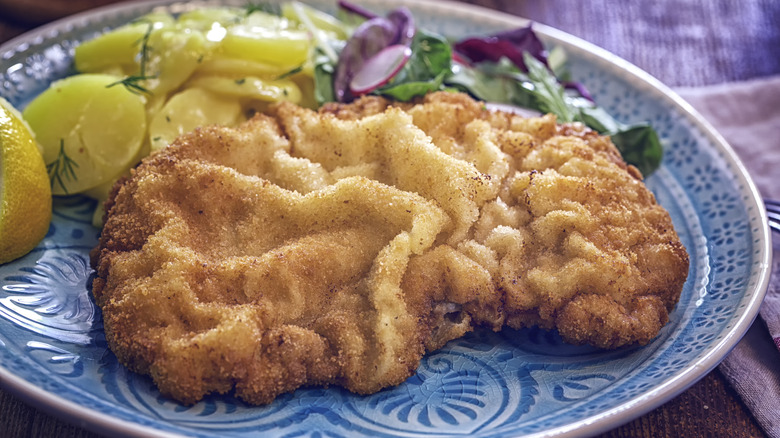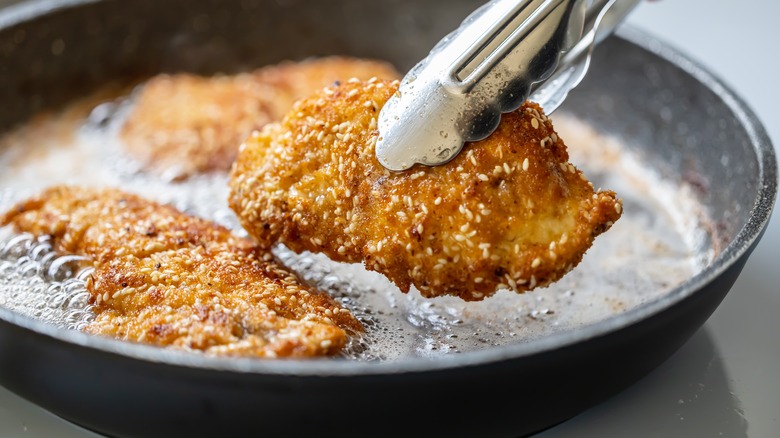The Biggest Mistake Everyone Makes With Schnitzel
A great schnitzel is a thing of beauty: Thinly sliced meat — veal, traditionally, though pork, chicken, beef, or other meats are used — pounded even thinner to tenderize, enrobed in a crunchy coating, and fried until shatteringly crisp. Bad schnitzel, on the other hand, can be a wan, greasy shame. So how can something with such potential go so wrong? The answer lies in the timing.
If you've ever breaded and fried food at home, then you know that it is a straightforward affair, but a bit laborious and messy. It's no surprise then that people may feel the urge to either work in stages or prepare breaded food, such as schnitzel, ahead of time. When the time comes, all you have to do is slide it into the hot oil and fry to golden brown. But breading, be it the flour coating on fried chicken or the bread crumbs adorning a schnitzel, doesn't age well. With time, the moisture in the meat and the eggs seeps into the breading, resulting in a schnitzel with a coating that is gummy, limp, and often fails to adhere to the meat.
Prep your mise en place
When undertaking a schnitzel, it is important to have your station set up and ready to roll. Assuming you have your meat slices already pounded thin and seasoned, you need to have three dishes — these can be pie tins, wide-mouthed bowls, or rimmed plates — for breading, one each for the seasoned flour, whisked eggs, and seasoned breadcrumbs. You also need to have your skillet filled with fat with a high smoke point, such as vegetable oil or ghee, heated to the correct temperature before you begin breading.
All of this prep is critical for schnitzel that sings. The cutlets of meat are first dredged in flour, which creates a dry exterior. The dry exterior helps the whisked egg adhere to the meat. The egg not only binds with the flour to create a sort of base batter, but it is absolutely necessary to hold the breadcrumbs in place. The breading process should be quick but thorough, and once completed, the schnitzel should immediately head into the pan of waiting oil. Once fried, the schnitzel needs to be placed on a wire rack over a baking sheet and can be kept in a warm oven while you continue to bread and cook.
We know, it is a bit tedious to get your schnitzel station fully prepped before you do any actual cooking. But trust us, once you take the first bite of that supremely crunchy cutlet, you'll know why it was worth it.

